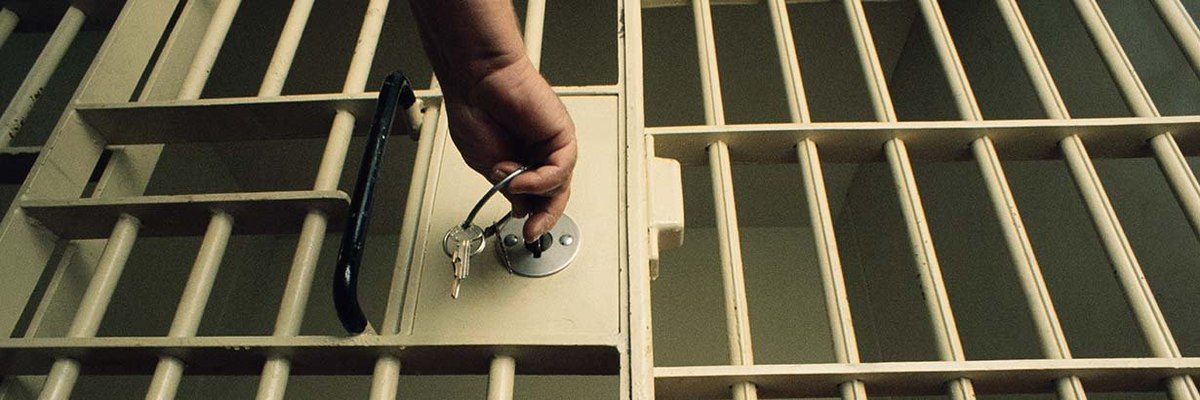The degree of civilisation in a country “can be judged by entering its prisons”. Those are the words of one of history’s greatest writers and thinkers, Fyodor Dostoevsky. He spent four years doing hard labour in a prison in Siberia. He died soon after he was released. If he was right when he wrote those words we should regard the degree of civilisation in this country as pretty shameful. That’s because our prisons are in a shocking state. All the experts agree on that. But there are wider questions to be asked and they are very much in dispute. What are our prisons for and are they doing their job?
It was back in the early days of the Conservative government that the Home Secretary Michael Howard brought the party conference to its feet with a rousing declaration that prison works: “It ensures that we are protected from murderers, muggers and rapists - and it makes many who are tempted to commit crime think twice.” That was 2003. The message to this year’s conference from one of his ministerial successors, the justice secretary Alex Chalk, could scarcely have been more downbeat. Our prisons are in such a state, he said, that the government is even considering changing the law so that inmates can spend their sentences in less crowded prisons overseas.
The Times writer Alice Thomson has had her own experience of prison. Admittedly it was only for one day but that, she says, was enough. She was accompanying the chief inspector of prisons, Charlie Taylor, around HMP Wormwood Scrubs in west London. Here’s how she described it: “I struggled to cope with the strong smell of Spice mingled with sweat, the constant slamming of doors, alarms echoing, strip lights glaring, the lethargy of the men lying on their bunk beds locked up 23 hours a day in their 6ft by 12ft cells, tiny windows looking on to tarmac, barbed wire, netting. .. I left reeling.”
Mr Taylor spends half his life in prisons and his annual report suggests the Scrubs may be pretty wretched but it’s by no means the worst of our 117 jails. It describes blood on the sheets, excrement in the showers, cockroaches, contraband, burnt-out cells, closed libraries and classrooms, and rats eating the white sliced bread. Swathes of the prison estate are no longer fit for purpose. Outstanding maintenance costs were estimated in 2021 to be about £1 billion. In England, two thirds of prisons are overcrowded. Stop-gap measures, such as the use of police cells to house prisoners, are increasingly resorted to.
Jails are understaffed, insanitary and overcrowded. Official predictions show the prison population could exceed operational capacity as soon as next month. And even as the number of prisoners has increased, staffing levels have fallen. The number of frontline officers was cut by a quarter between 2010 and 2017. An Independent Monitoring Board report into Wandsworth prison found that available staffing levels rarely exceeded 50 per cent. Conditions were “unsafe and inhumane” and contraband was rife — all conditions representative of “the failures of the prison system as a whole”.
One solution to the overcrowding and the appalling conditions is simply to cut the prison population. Send fewer people to jail. It seems that’s already beginning to happen. One senior crown court judge told the Times judges have been “ordered/strongly encouraged” not to send to prison a defendant who appears before them on bail so as not to add to the prison population. The judge said: “We have been told that this is a ‘short-term measure’, but nobody knows what that means.”
What that judge and everyone else with any experience of our prison system does know is that our prisons cannot cope. One solution is to build more of them and recruit many more prison officers. Successive governments have promised to do that but it simply hasn’t happened. The Conservative manifesto four years ago commited the government to creating 20,000 new prison places by the mid-2020s. It’s not happening. Proposals for three new prisons have all been obstructed by delays in gaining planning permission. Sceptics say politicians know there are more votes in improving schools and hospitals than prisons.
The other solution is to reduce the number of people we send to prison. And that raises a fundamental question. Does prison work? But that, in turn, raises many more questions. For a start: what do we mean by “work”? What do we want our prisons to do?
Obviously we want them to keep us safe. The most basic requirement of any citizen is that when our children go to school in the morning we know they will come home safe in the afternoon. We want to be able to walk down a dark street without fear and lie in our beds at night knowing we and our family are safe from intruders. When somebody has harmed us we want to see them caught and locked up.
It gets more complicated when we move beyond violent criminals. But isn’t it true that we also want them to be punished? And why not? If they have caused great harm surely they should pay a great price for it. But what should that “price” be? If the offence was theft with no physical violence involved and they are forced to pay an appropriate fine and repay us, should that be an end to the matter? But what if they have no money so they can’t repay us? Should we lock them up? And what if they make a habit of stealing? Should we lock them up again and again?
Perhaps they should be sentenced to some form of “community service”. That may or may not stop them offending again, even assuming the orders are properly enforced, which is not always the case. And what if none of these deterrents work? Then, you may argue, we have no choice but to lock them up. After all, prison does work doesn’t it? The statistics suggest the answer to that is no.
We lock up 159 men and women per 100,000 population. That’s higher than any other country in western Europe. The number of prisoners being held on remand has reached its highest level for twenty years. Many of the sentences are short – especially in the case of women and non-violent crimes. That may sound a humane approach, but the effect can be disastrous. Someone sent to prison, even for a short time, may very well lose their job and possibly their home and face mounting debts they have no hope of repaying. The result? More than 65 per cent of those incarcerated for less than a year reoffend. Their lives are disrupted to such an extent they may feel they have no option but to turn to crime again. We have some of the highest reoffending rates in western Europe. So the argument that we lock people up to deter them from a life of crime begins to look a little thin.
But isn’t there an argument for locking up fewer people and doing more to rehabilitate them? Alice Thomson points out that that’s effectively what we have been doing, on the quiet, with young people: “Ten years ago the judiciary and police agreed, unheralded, to send fewer under-18s (many of them from the care system or broken homes) to young offenders’ institutions. Offending rates for 10 to 17-year-olds in England and Wales have fallen 79 per cent in a decade.
“Germany made the same decision for adults three decades ago. In that period the prison population of England and Wales has doubled from 44,100. In Germany, however, the figure has fallen from 65,800 to 45,000. The majority of inmates there wear their own clothes, have their own cell keys and are expected to work in kitchens, factories and farms. Their reoffending rates are 46 per cent from a smaller base of hardened criminals; their crime rates have stabilised.”
The Norwegians have a reoffending rate of 20 per cent. That’s the lowest in Europe. They also have what many would regard as the cushiest jails. Even the most dangerous inmates, says Thomson, are held in homely conditions with duvets and sofas, sports facilities and nourishing food. She acknowledges that this would infuriate many in Britain – what about taking our lead from Germany?
This takes us back to the question of what prison is for – apart from protecting society from those who put us in danger. Those with vast experience of our system like Charles Taylor, the chief inspector, sum it up in one word. Rehabilitation. If prisoners feel helpless and have no hope they are infinitely more likely to reoffend when they are released. Nearly 48 per cent of inmates have no qualifications and 57 per cent have a reading age lower than an 11-year-old. When they are released adults are given £82 and told to find a new life.
What’s your view on all this? Do you believe we law-abiding citizens have a responsibility to help prisoners or that they have chosen to make their bed, so they must lie on it?
Should we abandon the word “punishment” and substitute “rehabilitation”?
Do you think prison works? Or is there a better way?









